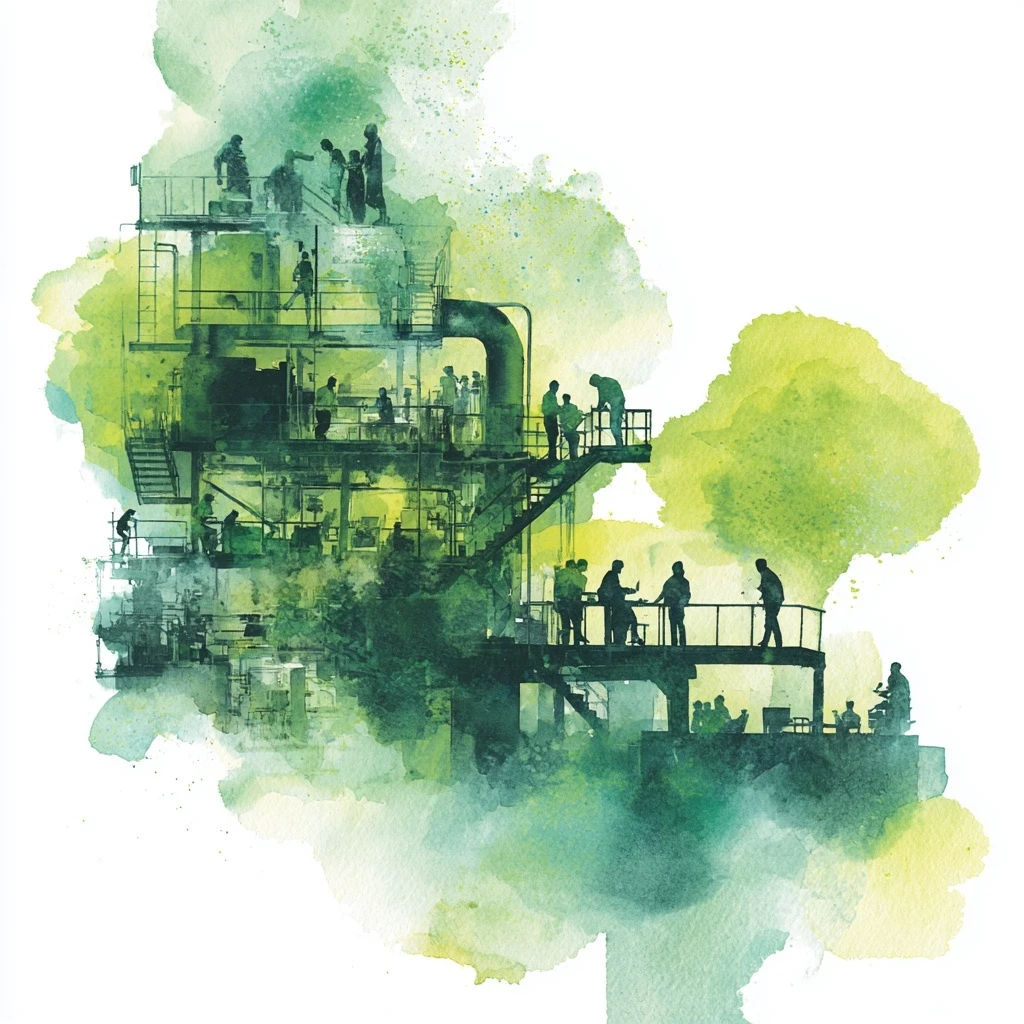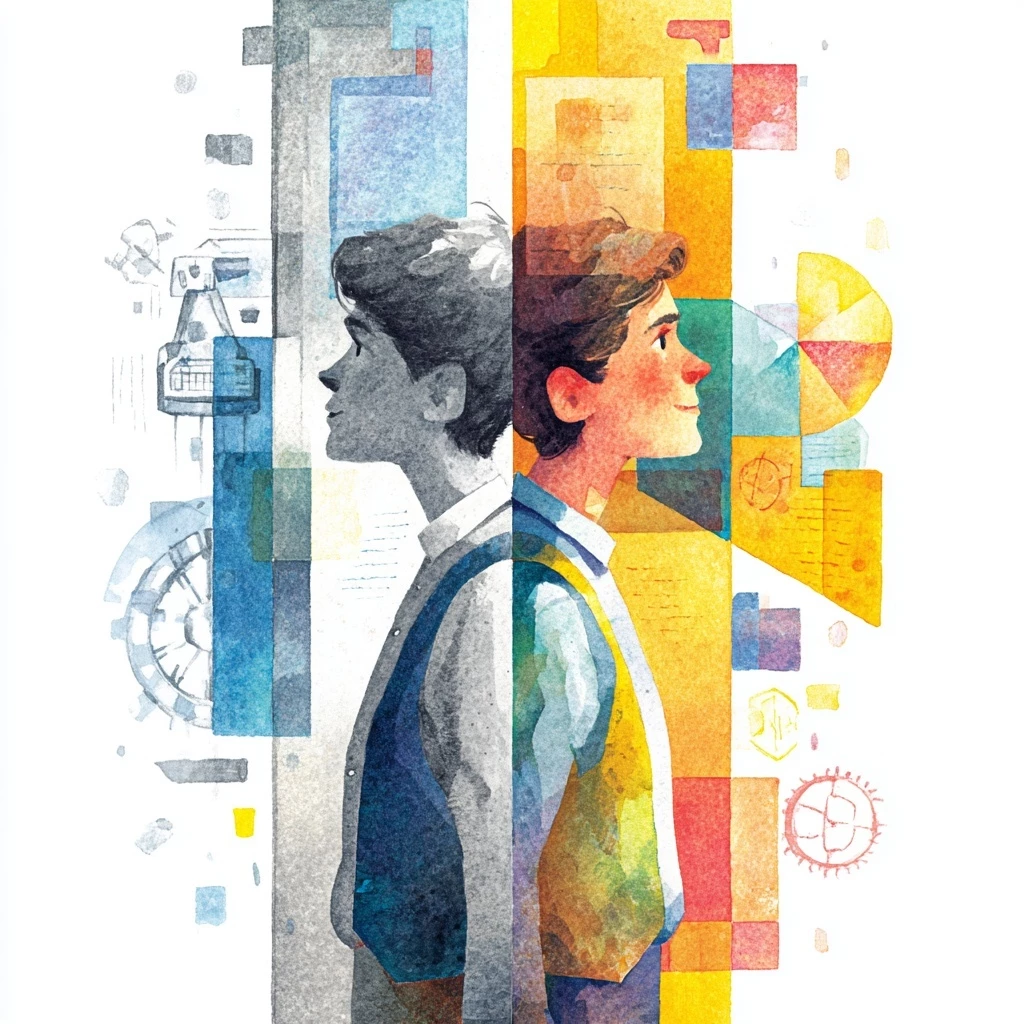Design Thinking to Humanize the Digital Process
Add bookmark
How to use a 'try and test' methodology to hone in on solving user experience
In the age of user-centricity and customer experience, Design Thinking coming to the fore. SSON’s editor talks to Mito Mihelič, Head of Design Thinking at Viessmann Group GmbH.
Why is Design Thinking becoming so important? The answer is because most organizations don't truly know their customer, and that’s a problem they need to solve, especially as the digital revolution risks exacerbating this gap. And while Design Thinking might be an intuitive approach to improving Viessmann’s customers’ appreciation for the company’s heating, cooling and climate control technology, it’s equally valuable in improving business process gaps. In fact, the philosophy is truly about humanizing digital processes.
Here’s why.
When we consider the digital solutions that are currently disrupting traditional business support services, for example the robotic automation tools that are driving such improvements in processing performance, the challenge is that these solutions are generally programmer-driven, developed by techies for whom the technology environment is home. This does not make the tool or solution naturally intuitive to the end user, however.
"The truth is that end-users are not as skilled in digital work as the designers who design these tools,” explains Mito Mihelič, Head of Design Thinking at Viessmann Group GmbH. “As 'design thinkers' we are the messengers between the developers and the digital solution. Our intervention turns a good solution into a great one because we ensure it suits the user's needs."
While Design Thinking is something of a buzzword right now, that’s primarily because there has never been a greater need to ensure that innovative solutions are matched to the user’s experience as well as to the problem they solve, Mito explains. "We need to make sure that whatever solution we come up with provides a differentiated value for the end-user – and you simply cannot optimize a solution unless you align it to the user."
This need to optimize solutions is driving a lot of low hanging fruit for design thinkers. The concept has been in vogue for a few years (read HBR’s 2015 article here), it’s true, but it’s only more recently that institutions like Stanford are offering courses on how to integrate Design Thinking into organizational teams. Mito’s team, too, while predominantly focused on supporting German-owned Viessmann in problem-solving its customer- and user-experience, has seen such interest that it now offers its expertise to third parties through Viessman’s VC/O User Lab subsidiary.
6 Steps to Design for Users
Design thinking is based on six different steps, which serve to evaluate, brainstorm, visualize, and test an improved, user-centric approach to a given problem.
1. Understand the Challenge
The first step in Design Thinking involves a small team of 5 to 7 people that include experts as well as newbies and is led by a facilitator or coach. The objective is to educate each other on the challenge to solve, Mito explains, by starting with, for example, a simple semantic analysis of the problem statement.
“For example, if the challenge is to design a way for how people will work in future, our approach would be, first, to underline the keywords: people, work, and future. We then take each word individually to figure out what it means,” he says. “‘We’ could apply to the team, the company, or the ecosystem; ‘work’ is about imagining what it will look like; and ‘future’ could be robot-enabled and emotionally driven”.
The point of this step is to clarify the issue and identify the users by way of a stakeholder map, Mito explains. Once these have been identified, the next step is to meet with them for a series of qualitative interviews – whereby the objective is not a 'yes or no', he says, but about understanding the stories and emotions behind their answers. While stakeholders can range from the mailroom to the CEO, the management level tends to be where most struggles bottleneck and where the impact of Design Thinking is therefore most effective, he adds: "If we can solve solutions for the mid-management level, we tend also to gain the greatest support for our work."
2. Point of View
The first two stages result in a clear persona, which best represents the particular problem or gap at stake. "We tried to merge the various points of view into one crisp persona, complete with name and hobbies to humanize them, for solving a particular need," Mito explains. "For example, we may come up with a 37-year-old man called Tom, who leads a team of 10 people, and runs marathons in his free time. The point is that, for whatever reason, his team’s inputs are not well received or impactful. So, how can we help him overcome this challenge?"
3. Ideation
Ideation is about brainstorming creatively, in a non-judgmental forum. Lots of sticky notes come into play to encourage the kind of "crazy disruptive ideas" that promote problem-solving solutions, Mito says. "We generally work towards 7 to 10 clusters and vote for a maximum of three that we think fit best.”
4. Prototyping
The idea brainstorm is followed prototyping with the use of fairly simple, even primitive materials to make these ideas tangible. "We use Play-Doh, LEGO, paper and tape to come up with truly tangible, tactile solutions to the problem,” explains Mito. “Too detailed, highly polished prototypes are often admired, since they reflect hours of work and patience in favour of looking almost like fabricated objects. Very often, however, the form dominates the function and restricts people from giving honest feedback on how much sense it would actually make to use these in real life – whereas simple, quick and dirty prototypes reveal far more honest feedback. Even if it's a digital process, it's refreshingly insightful to reflect the problem through a tangible medium and this often promotes better solutions. There is something about moving the pieces of a process around that make it come to life."
5. Testing
The proof of the pudding lies in the eating. The final prototype solutions are presented to the original key stakeholders (though not necessarily the same people) to garner their feedback. "This stage is all about trying out our ideas, and the feedback we gain is key,” says Mito. “Often, we go back to the drawing board after this stage but that is not because we failed – it's because we now better understand the questions we need to ask. As we get closer to the process, we are able to present different solutions.”
Essentially, Design Thinking is about problem-solving, working in teams, where the solution is co-created with the end user. User feedback informs the solution process, so going back to the drawing board is expected.
6. Design Solutions Through Cultural Change
Given Viessmann’s industry, the team’s focus is often on solving users’ concerns around adopting modern heating or cooling products and services. Today, these are more often than not based on creating a smart home environment while also safeguarding user information. Often, the team’s conclusions require finding a third party to collaborate with, to bring in the extra tech expertise needed to develop the portfolio. "As we are based in Berlin there are plenty of tech startups that are working in relevant areas and our approach is generally to align our interests by either acquiring or collaborating with them,” Mito explains.
Design thinking can be used for any kind of activity. That includes intangible process work done in Shared Services as well as consumer-driven, sales challenges. "The driver is the need to humanize the digitalization that is increasingly defining our lives, whether at home or at work,” Mito explains. “What we do is effectively provide a cultural change trigger that solves an organization's problems by dealing with areas of friction, or bottlenecks. We target the frustrations of an employer, be that sick leave, on-boarding, or how to make yourself more attractive to incoming talent.”
Viessmann’s Design Thinking team has been deployed on a variety of projects, from helping the international audit team optimize reporting, to solving the CFO’s concerns around lack of system transparency over key buyer groups. "We have also supported marketing and logistics very successfully," Mito adds, “to name just a few examples.”
Of course, getting the persona right is key. “Although we target one representative persona, it's really useful to bear the extreme outliers in mind,” he explains. “While you are unlikely to solve for the extremes – that would not be cost-effective – the truth is that if you convince the extreme outliers, you will also be solving for the mass of your target market which might not be able to verbalize its concerns as easily. So, it's worth investing in these outliers because they express what the majority feels but cannot or will not express."
Summary
Design thinking starts as a linear methodology that very often stays on this level in enterprises, Mito explains. With iterations, it is made circular, constantly returning and improving previous steps, until it achieves the best solution for the user.
“The first step is based on observation, but as you evolve through the additional steps you hone your understanding of the problem. In testing out your prototypes with the end-user you often realize that you didn't ask the right questions in the first round. The first prototype often acts as an icebreaker, in other words,” he adds.
“While the prototype introduction might take five minutes, we spend 25 minutes digging deeper with the user group. It can take a few rounds to get the right solution. Seeing what does not work is just as important as seeing what does work, from a design perspective,” says Mito. “Sometimes we are ahead of the curve and our solution may 'too early' for the end-user. But that's a great place to be."
_________________________________________________
IF YOU ARE INTERESTED IN THIS TOPIC, JOIN US!
The Nordics Business Transformation Summit
This November in Stockholm, Sweden: Transform your back office through digital innovation!
_________________________________________________




























